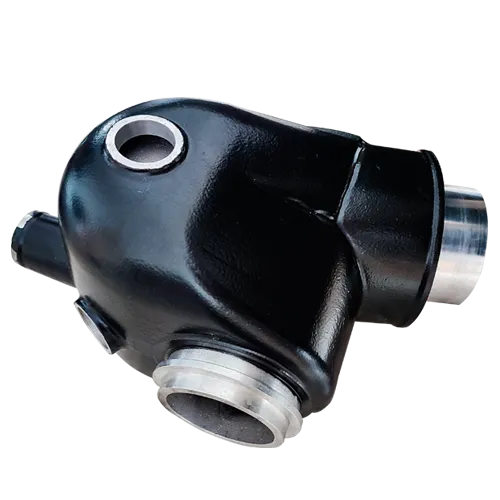Mobile:+86-311-808-126-83
Email:info@ydcastings.com
Exploring the Versatility and Applications of Pipe Caps in Various Industries
Understanding Pipe Caps Essential Components in Piping Systems
In industrial applications, piping systems play a crucial role in the transport of fluids, gases, and slurries. Each component of these systems is essential for maintaining efficiency and safety, and one such vital component is the pipe cap. Pipe caps, also known as end caps or pipe end caps, are fittings designed to seal the end of a pipe, preventing leakage and contamination.
The Functionality of Pipe Caps
Pipe caps serve several key functions in piping systems. Firstly, they provide a secure seal at the end of pipes, preventing the escape of fluids or gases. This sealing capability is especially important in high-pressure applications where leaks could lead to severe safety hazards or environmental issues. Secondly, pipe caps protect the internal surfaces of the pipes from external contamination, corrosion, and damage, thus extending the lifespan of the piping system.
Moreover, pipe caps are also used for capping off unused pipe ends in a system. This is particularly useful during maintenance operations, where specific sections may need to be temporarily sealed. In addition, they are used in systems where future expansion is anticipated, allowing for the easy addition of pipes.
Materials and Types of Pipe Caps
Pipe caps are available in a multitude of materials, with the choice of material typically dependent on the application requirements. Common materials include
1. PVC (Polyvinyl Chloride) - Known for its corrosion resistance and lightweight nature, PVC pipe caps are ideal for water and drainage applications. 2. Steel (Carbon or Stainless) - Steel caps offer high strength and are often used in high-pressure systems. Stainless steel, in particular, provides excellent corrosion resistance and is suitable for food, pharmaceutical, and chemical applications. 3. Copper - Often used in plumbing and refrigeration, copper pipe caps are durable and offer good thermal conductivity.
pipe caps

In terms of types, there are different designs of pipe caps such as threaded, slip-on, and welded caps, each tailored for specific installation methods and system designs.
Installation Process
The installation of pipe caps is generally straightforward. In the case of threaded pipe caps, they can be simply screwed onto the end of the pipe. For slip-on caps, they are pushed onto the pipe end and typically secured with adhesive or welding. Proper installation is critical to ensure a leak-proof seal, and, if applicable, following manufacturer guidelines can help maintain system integrity.
Applications of Pipe Caps
The applications of pipe caps are vast and varied. They can be found across several industries including oil and gas, water treatment, construction, and manufacturing. In the oil and gas sector, pipe caps are used to protect pipeline ends from debris and damages, particularly in areas where pipelines are exposed to harsh environmental conditions. In construction, pipe caps are essential for ensuring the safety of unfinished plumbing systems, preventing unauthorized access and hazards.
Environmental Considerations and Future Trends
As industries evolve, there is a growing emphasis on environmentally friendly practices. The production of pipe caps is no exception. Manufacturers are increasingly turning to sustainable materials and methods that minimize environmental impact. Recyclable materials and innovative designs that reduce waste are gaining popularity.
In conclusion, pipe caps may seem like small components in the grand scheme of piping systems, but their importance cannot be overstated. They play a critical role in sealing, protecting, and maintaining the integrity of pipes across a multitude of applications. As industries continue to innovate and adapt, the future of pipe caps will likely be shaped by advancements in materials and manufacturing techniques, further enhancing their functionality and sustainability. Understanding these components better equips engineers and operators to create safe, efficient, and durable piping systems.
-
Why Should You Invest in Superior Pump Castings for Your Equipment?NewsJun.09,2025
-
Unlock Performance Potential with Stainless Impellers and Aluminum End CapsNewsJun.09,2025
-
Revolutionize Your Machinery with Superior Cast Iron and Aluminum ComponentsNewsJun.09,2025
-
Revolutionize Fluid Dynamics with Premium Pump ComponentsNewsJun.09,2025
-
Optimizing Industrial Systems with Essential Valve ComponentsNewsJun.09,2025
-
Elevate Grid Efficiency with High-Precision Power CastingsNewsJun.09,2025











